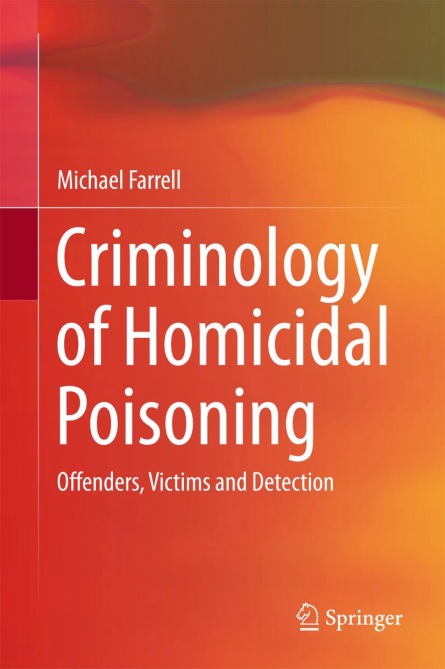
The Subtle Art of Poisoning
Expert discusses investigative criminological toxicology.
In 1993, Glenn Turner, a police officer in Georgia, named his wife, Lynn, as the beneficiary on his life insurance policy. After she began an affair with a firefighter named Randy Thompson, Turner grew sick and died. The medical examiner ruled it natural. Lynn quickly moved in with Randy. He purchased a life insurance policy but her overspending threatened a potential rift. Pretty soon, he, too, was sick. When he died, it was another “natural death.”
The mothers of these men joined forces and got a new investigation. By the fall of 2001, it became clear that both men had been poisoned with ethylene glycol, i.e., antifreeze, which causes organ failure. Lynn was arrested. An abundance of circumstantial and behavioral evidence linked her to the deaths, and the “black widow” was found guilty. In 2010, she committed suicide in prison by poisoning herself with a prescription medication.
This is just one of the seven “instructive” cases that Dr. Michael Farrell provides in his book, Criminology of Homicidal Poisoning. Others are “American Beauty Killer” Kristin Rossum and the Cooper brothers. He also discusses healthcare killers like Harold Shipman, many of whom used lethal levels of medications. Farrell, a private consultant on the use of poison in homicides, has a substantial background in psychiatry and medical research. This comprehensive textbook links forensic toxicology with criminology, making an important contribution to both fields.
Farrell not only describes how homicidal poisoning fits the most popular criminological theories for why people kill but also examines the nature and lethality of various poisons, identifies trends in poisoning, provides a history, and shows offender traits and victim characteristics. In one chapter, he even discusses issues for investigators and prosecutors who will be taking a poisoning case to trial.
These perpetrators have a lot on their side, and case reconstruction often depends largely on circumstantial evidence, with an emphasis on motive. (Kristin Rossum, for example, was having an affair, for example, and her husband, who’d supposedly committed suicide by fentanyl overdose, was known to be pill-aversive. Rossum had access to the drug.) It took years and persistent family members, along with acknowledgment of investigative errors, to bring Lynn Turner to justice.
Cold case investigators should take note! Many poisonings initially look natural or accidental, or can be passed off as a suicide. Suspicious circumstances, no matter how seemingly slight, should be investigated. Intentionality is key – what do these suspects gain from it? Poisoners can go undetected for years, especially if their victims are members of populations who are expected to die (the sick and elderly).
Successful poisoners are cunning, remorseless, and often greedy or looking for a way out of a difficult situation. They must have the intelligence to study the behavior of a poison and to plan ahead for its use and consequences. They need to know if they prefer a quick or slow death and how to hide the symptoms. Staging plays a significant part.
Stagers find ways to mask symptoms or defer investigation. They might oppose an autopsy and have a body cremated. They might write a suicide note or “confide” to a doctor that the victim was suicidal. They might clean up the scene, wipe a computer search, or surround a search with context that subtracts evidentiary value. They might have a ready explanation if poison is detected. (A minister who “discovered” his overdosed wife dead told police that she was a sleepwalker and must have taken the pills by accident.)
It’s a popular notion that females are more likely to use poison than any other means, which gives the false impression that males rarely poison. Male poisoners apparently outnumber females – at least, of those who are caught. Medical professionals are over-represented, possibly because they have more knowledge of, and access to, drugs and potential poisons. Over and over, we find that healthcare serial killers have administered the “wrong” meds or given an overdose. It’s important that we understand those who decide to kill someone in this manner.
Farrell believes that homicidal poisoning is underestimated. Given how easy it can be to overlook evidence, to accept other explanations, and make investigative missteps, he’s probably right. Poisons can be easy to acquire, and motives to use it are all-too-human.
Katherine Ramsland is a professor of forensic psychology at DeSales University in Pennsylvania, where she also teaches criminal justice. She holds a master’s in forensic psychology from the John Jay College of Criminal Justice, a master’s in clinical psychology from Duquesne University, a master’s in criminal justice from DeSales University, and a Ph.D. in philosophy from Rutgers. She has been a therapist and a consultant. Dr. Ramsland has published over 1,000 articles and 60 books.


























A JACOB
December 27, 2017 at 10:18 am
Reblogged this on THE OWL.
LikeLike
gregjolley
March 17, 2018 at 1:32 pm
Thank you. Brilliant!
LikeLike